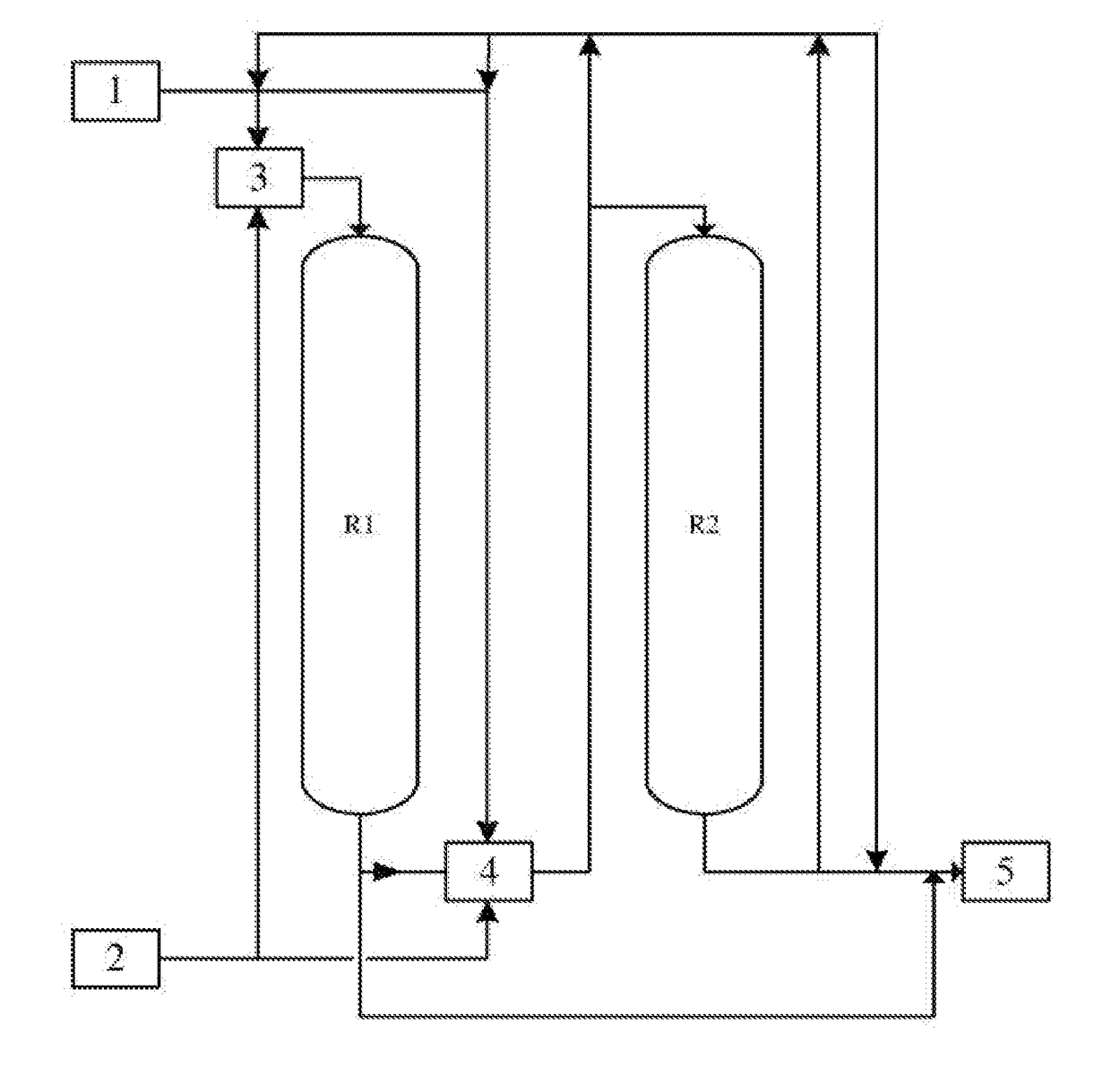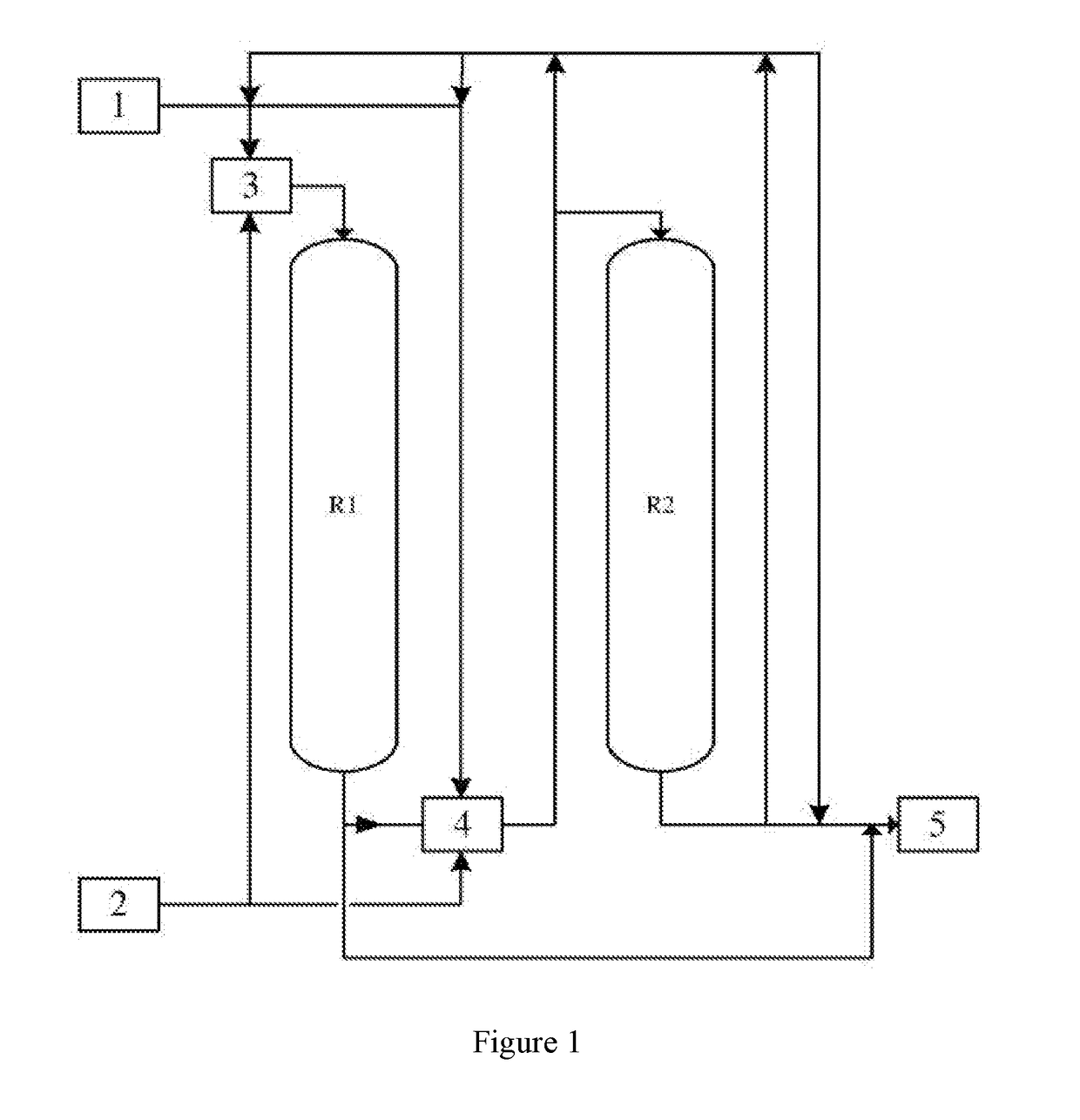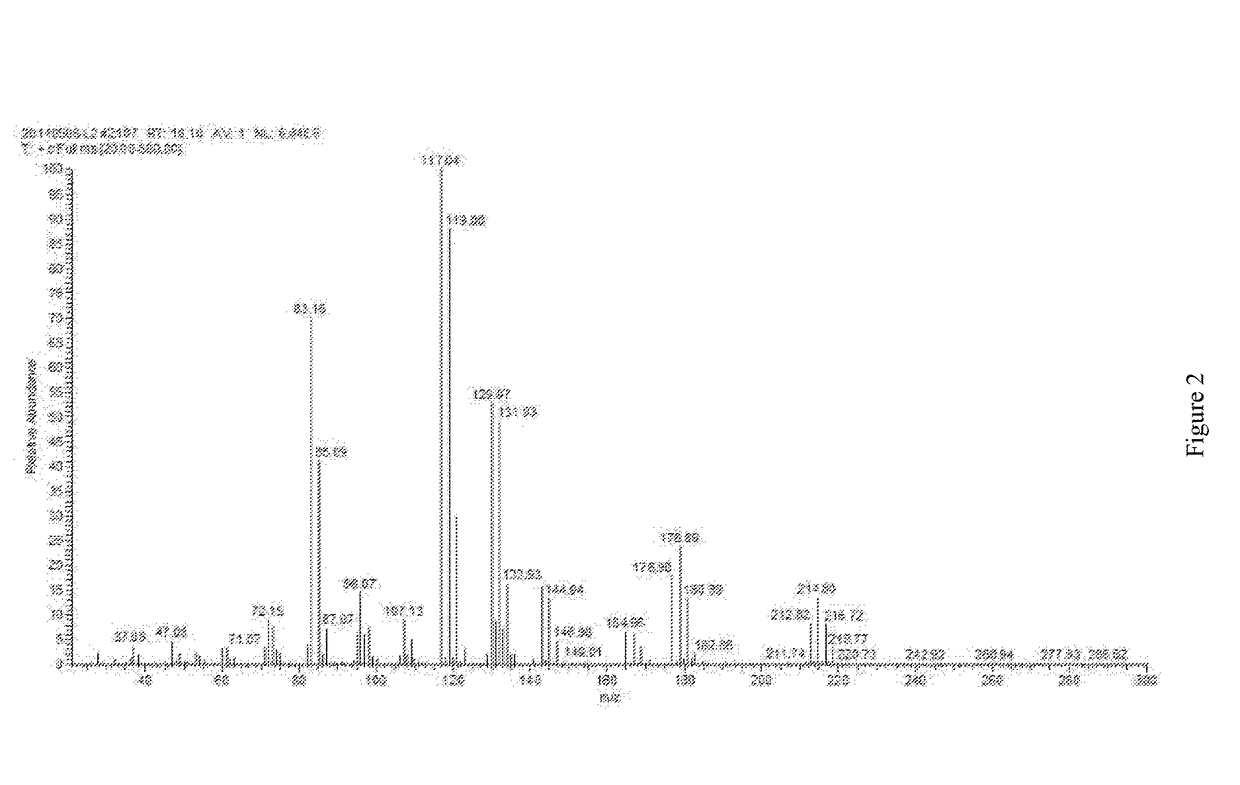Process for the preparation of 1,3,3,3-tetrafluoropropene
a technology of tetrafluoropropene and tetrafluoropropene, which is applied in the field of hydrofluoroolefin preparation, can solve the problems of low selectivity of hfo-1234ze in the method, inconvenient transportation of raw materials, and high cost, and achieves mild reaction conditions and is convenient to obtain
- Summary
- Abstract
- Description
- Claims
- Application Information
AI Technical Summary
Benefits of technology
Problems solved by technology
Method used
Image
Examples
example 2
[0049]The process of step (a) is described as follows:
[0050]The reaction material 1 was firstly well mixed with the hydrogen fluoride 2 in the static mixer 3, and then introduced into the primary reactor R1 and the secondary reactor R2 successively. After reacting at the bottom of the primary reactor R1, the mixture was well mixed with hydrogen fluoride by a static mixer 4 (or a phase separator, heat exchanger, separation device or a combination thereof according to the requirements), and then introduced into the secondary reactor R2 to carry out the reaction, then the reaction product was introduced into the separation section 5.
[0051]When the catalyst in reactor R1 was inactivated, the reactor R1 was cut out of the system for regeneration. The reaction material 1 was well mixed with the hydrogen fluoride 2 in the static mixer 4, and then introduced into the reactor R2 successively to carry out reaction. When the reactor R1 was regenerated, the order of the raw materials entering i...
examples 3-5
[0056]The reactions in Examples 3 to 5 were carried out in the same manner as that in Example 2, the differences were that, the reaction temperature of the primary reactor (R1) and the secondary reactor (R2) in Example 2 were 220° C. and 300° C. respectively, while the reaction temperature and reaction results of R1 and R2 in Examples 3 to 5 were show t in Table 1.
TABLE 1ReactiontemperaturesConversionSelectivity (%)(° C.)rates ofR1R2ExamplesR1R2230da (%)231da232da233db234db222030010023.874.492.12.1322028010023.874.496.41.2420032010035.363.787.63.6524031010019.187.690.32.7
examples 6-8
[0057]The reactions in Examples 6 to 8 were carried out in the same manner as that in Example 2, the differences were that, the ratios (molar ratio) of HF to organic materials in R1 and R2 in Example 2 were 10:1 and 15:1 respectively, and the contact time in R1 and R2 were 10 s and 20 s, respectively, while the ratios (molar ratio) of HF to organic materials, contact time and reaction results in Examples 6 to 8 were shown in Table 2, wherein the conversion rates of 230da were 100%.
TABLE 2MaterialsContactpropor-timesSelectivity (%)Exam-tions(s)R1R2plesR1R2R1R2231da232da233db234db6 5:110:11565.434.198.00.8710:120:152041.057.693.41.9820:115:1203020.871.585.44.5
PUM
| Property | Measurement | Unit |
|---|---|---|
| Temperature | aaaaa | aaaaa |
| Temperature | aaaaa | aaaaa |
| Temperature | aaaaa | aaaaa |
Abstract
Description
Claims
Application Information
 Login to View More
Login to View More - R&D
- Intellectual Property
- Life Sciences
- Materials
- Tech Scout
- Unparalleled Data Quality
- Higher Quality Content
- 60% Fewer Hallucinations
Browse by: Latest US Patents, China's latest patents, Technical Efficacy Thesaurus, Application Domain, Technology Topic, Popular Technical Reports.
© 2025 PatSnap. All rights reserved.Legal|Privacy policy|Modern Slavery Act Transparency Statement|Sitemap|About US| Contact US: help@patsnap.com



